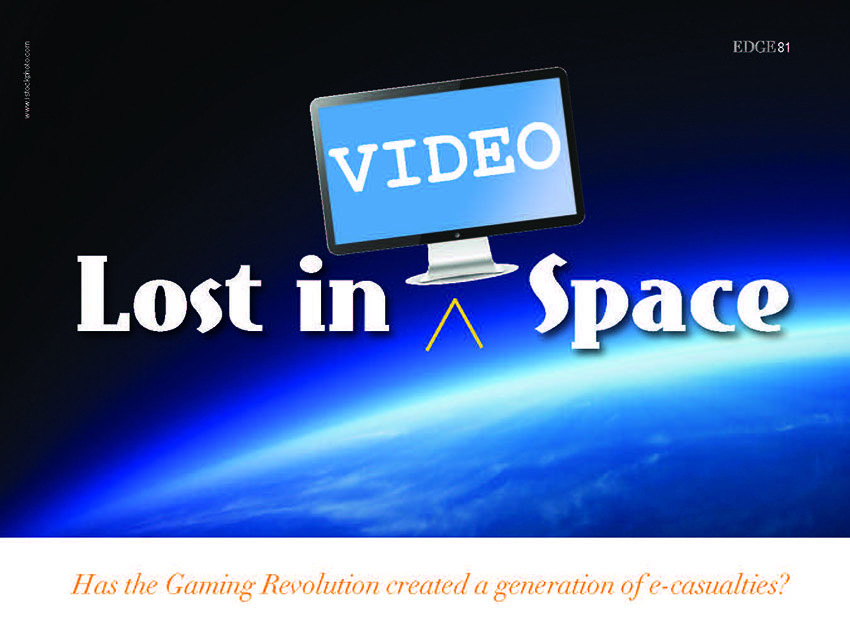According to leading New Jersey educators, the case for a challenging literature curriculum is open-and-shut.
A couple of months ago, I convened five of my old school girlfriends during our annual reunion to discuss our all-time favorite middle-school (we called it “junior high” back then) Summer Reading List titles. There was an immediate consensus about Catcher in the Rye, To Kill a Mockingbird, and The Heart is a Lonely Hunter. These novels represented our first foray into more serious, more adult fiction, offering themes of rebellious angst, social injustice, and seemingly insurmountable challenges. We also agreed that, as parents (and now grandparents), we were all too familiar with the moaning and groaning of subsequent generations when presented with the dreaded list. Perhaps it’s overscheduling or shorter vacations or digital distractions, but it seems as if the “I can’t wait to read it” treasures of our early teens have become the “Do I have to read it?” chores for a lot of kids today.

www.thinkstockphotos.com
For generations the great literary safety net has been supplied by our schools. Whether reading comes naturally to a student or is a bit of a forced march, every child is exposed to the enlightening qualities of a great book sometime in the vicinity of 6th Grade, and in most systems the rubber meets the road in 7th. By high school, kids have been introduced to literature in a meaningful way; they get why reading matters. For some it sticks, for others it doesn’t.
The responsibility of educators is to inspire their students to read. (It’s up to authors to keep readers reading.) Some school systems in New Jersey do a magnificent job. Others have become less demanding of their students, and even of their teachers. In assessing the relative merits of a child’s educational options, parents would be wise to ask questions about how great literature fits into a school’s overall philosophy. We put this question to a number of top schools in the Garden State.
“The job of a teacher is not just to find the right book, but to start a student on a lifetime of reading pleasure.”
—Dr. Peter Lewis • Head of School The Winston School • Short Hills
Dr. Lewis defines the basic literacy goal for all students as “getting pleasure out of print,” adding that “with literature, we need to find a theme that will spark interest—but first we need to provide the techniques and strategy to decode the words, starting in the lower grades.” At Winston, non-fiction is typically factored in during the Middle School grades. Often the hero is a very ordinary human being who rises to meet and overcome challenges. For example, Mountains Beyond Mountains, by Tracy Kidder, is a book about Dr. Paul Farmer and his inspiring quest to cure infectious diseases around the world.
Be it fiction or non-fiction, Dr. Lewis believes that, from an academic perspective, all literature is still fundamentally “text,” and the challenge is to keep students enraptured by the written word rather than put off by the hurdles of decoding them. That effort includes booking author visits to add a living component to the books students are reading. On a school trip to see Orlando Bloom in Romeo and Juliet on Broadway, Bloom met with Winston students and explained that although he had been dyslexic as a child, he had managed to overcome his early challenges to pursue and achieve his lifelong dream of becoming a modern-day Shakespearean actor. Dr. Lewis used the opportunity to emphasize to his students that “Just because it’s hard to do, doesn’t mean you can’t do it.”
“Avid readers make awesome writers.”
—Mary Schoendorf • Middle School Literature Coordinator St. Bartholomew Academy • Scotch Plains
The kids at St. Bartholomew are in a “trilogy mode,” particularly by authors Suzanne Collins (The Hunger Games) and Veronica Roth (Divergent). Schoendorf has noticed that this popular reading genre has been influencing her students’ writing, which is immensely gratifying. Middle schoolers she notes, tend to be a bit unfocused in their writing. Often her role is to help fine-tune their efforts and come more quickly to the point they want to make.
To inspire her students’ interest in literature, Schoendorf regularly offers video clips about the authors to help bring them to life. She also insists on “web quests,” where students are required to research the author’s life and time—all before they even open the book. “This way,” she points out, “the book itself becomes the reward…and one that they can’t wait to start reading.”
Schoendorf also tries to nudge them out of their literary comfort zone into other genres (e.g., the classics). In doing so, she assesses class profiles in order to determine the most appropriate literature for the grade level, beginning with what she believes a class can emotionally handle. For example, she would ordinarily avoid Edgar Allan Poe, at least until the 7th Grade. For her 6th Graders, she might substitute The Hatchet, a young-adult wilderness survival novel by Gary Paulsen—an adventure story that is not as dark as Poe’s work, but offers all the same basic literary suspense elements. Recently, Schoendorf successfully introduced the 7th Graders to The Wednesday Wars, by Gary Schmidt—a coming-of-age story about a 7th grader. Her students were so impressed by the protagonist’s interest in Shakespeare that they asked for a Shakespeare unit in their own classroom, which is now known as Shakespeare Wednesdays. In fact, they even volunteered to give up half their recess for more class time with the Bard…which only proves her favorite point: “Get them interested, and they’ll bite.”
“Many of the most popular books fall into the category of dystopian literature, where the person who saves the world is a young adult.”
—Barbara Dellanno • Dean of Academic and Faith Formation Union Catholic High School • Scotch Plains
Dellanno, who doubles as Union Catholic’s Humanities Curriculum Specialist, sees the goal of both parents and teachers when it comes to young adult literature as “getting them hooked on reading for pleasure.” Her opinion about much of the YAL being written today is that it does just that. In fact, she admits to getting hooked herself on such contemporary classics as the Harry Potter series. Dellanno also believes it’s a positive for young readers to form their own tastes and reading habits. “I think that it is important that teachers and parents allow them to choose what they want to read,” she says, adding that there’s no harm in an occasional comic book or sports magazine.
The point is to get them reading and, once they develop the habit, they are more easily encouraged to branch out into serious literature, even the classics. Not surprisingly, Dellanno gives a thumbs-up to trending series literature, such as The Hunger Games, Twilight, Maze Runner, Divergent, Gone, and Park Service. As for singular novels, she favors The Book Thief and Wonder, as well as novels like Fahrenheit 451 and Persepolis. As for popular authors, continued on page 68 she lists Jerry Spinelli, Walter Dean Myers (a recently deceased resident of Jersey City), Sarah Dressen (for girls), and Elizabeth Wein (for historical fiction). “Dystopian-themed novels,” Dellanno notes, “are empowering and reflect a way for the younger generation to cope in a healthy way with our post-9/11 world.”
When asked why To Kill a Mockingbird seems to top everyone’s list of Middle School classics, Dellanno explains that it is a great tool to teach the important elements of fiction (setting, point of view, foreshadowing and symbolism), and that the 1962 film starring Gregory Peck enables students to compare and contrast great writing and great filmmaking techniques. “Also, the essential questions raised by the novel grip students and make them think and want to discuss what they have read with one another,” she says. The 1960 novel by Harper Lee happens to be Dellanno’s all-time favorite.
“The classics speak to the human condition and teach lessons about life to which all people can relate.”
—Dr. Martine Gubernat • Chair of English Department St. Joseph High School • Metuchen
The freshmen boys at St. Joe’s dive right into great literature in English I, including short stories, nonfiction, drama, novels, mythology and poetry. During a typical year, they’ll digest Shakespeare’s Julius Caesar, Inherit the Wind and The Call of the Wild. This sets the stage for English II, which focuses on American literature; English III, which transports young readers across the ocean for a year of British lit.; and finally to English IV and AP classes that feature challenging selections of world literature.
According to Dr. Gubernat, classic literature is at the heart of the English curriculum all four years. “The classics,” she says, “help readers to consider the impact of events—both large and small, positive and negative—on ordinary people.” The “noble language” of the classics, she adds, serves as the basis for student analysis and evaluation of the written word.
“The written language is still king.”
—Whitney Slade • Head of School
The Rumson Country Day School • Rumson

www.thinkstockphotos.com
The 2014–15 school year will be Slade’s first at RCDS, an independent K–8 school in Monmouth County with a strong historical commitment to fostering an appreciation of literature. The nature of how great writing is delivered, he notes, is changing…and with change comes trepidation on the part of parents and educators. “With the advent of the Internet and social media there is fear—real or imagined—that students will be distracted from reading and the joys of literature,” he says.
Slade believes that it is incumbent upon teachers, parents and caregivers to foster reading whenever possible. However, it needs to be on the young person’s terms. Whether reading an online version of a novel or a well-written publication, engaging in a worthy blog, or simply making a monthly visit to the bookstore, exposure is key. The form it comes in, he insists, should be irrelevant. “Good writing is as important as ever in binding us together, sharing a common history, fostering creativity, and developing skills for an unpredictable workplace,” Slade says.
“Books can evolve with you and your understanding of them can evolve, too…that’s just one wonderful thing about my job.”
—Lou Scerra • English Department Chair Newark Academy • Livingston
At first glance, the literary spread between 6th and 12th Grades at Newark Academy seems extremely ambitious. The 6th Graders are reading A Midsummer Night’s Dream and Nothing But the Truth, a novel about a boy suspended for humming the national anthem. The seniors are tackling

www.thinkstockphotos.com
Alison Bechdel’s 2006 graphic memoir, Fun Home, Junot Diaz’s Pulitzer-winning 2008 novel The Brief Wondrous Life of Oscar Wao, Virginia Woolf’s 1925 Mrs. Dalloway, and the playwright Tom Stoppard’s Arcadia. In between, students are introduced to Harper Lee, F. Scott Fitzgerald, Walt Whitman, Toni Morrison and John Green.
Serra, who heads the school’s literature-based English Department, points out that much of the literature he assigns is driven by story and character. He meticulously selects texts that are developmentally appropriate in terms of form and content, saying, “I’d like to think we have a nice blend of traditional classics and contemporary literature that all speak to the concerns of the 21st century world. We’re always eager to add new texts into the curriculum and we also try to listen to student input.”
Serra’s personal favorite is The Great Gatsby—the subject, as it happens, of his undergraduate thesis. Interestingly, he credits his sophomores with having helped him to “see the characters, the story, and the novel itself in a new way.”
Inside the Numbers
The U.S. publishing world generated $27.01 billion in net revenue in 2013, selling 2.59 billion units according to a recent report from the Association of American Publishers and BISG (Book Industry Study Group). A large chunk of that business is attributable to YAL. In December of last year, a report on CBS News indicated YAL sales were up 24 percent since 2010, making it the fastest-growing publishing market sector. Long overlooked by the big publishers, these books have actually become popular with adults, too; the report estimated that about 80 percent of YAL buyers are over 18…and not all of them are buying for kids.

www.thinkstockphotos.com
In terms of embracing non-paper delivery methods, the news is also positive. An article in New York Magazine last year entitled “YAL by the Numbers” showed that, in 2002, fewer than 5,000 YA titles were published—of which only 143 were ebooks. By 2012, the number of titles had more than doubled over 10,000, of which 40 percent were of the ebook variety.
Good literature comes in many shapes and sizes—from traditionally leather-bound library tomes to dog-eared and page-worn paperbacks to the latest palm-held backlit digital readers. There are some among us who would never trade that special feeling that comes from physically opening a “real” book and thumbing through it page-by-page. On the other hand, the popularity of audio and ebooks, whether delivered to a Kindle, a Nook, or some other experience-enhancing device, has expanded exponentially, especially among the younger generation. Whatever or however a person prefers to read, it is the actual commitment to read that really matters. And for that we count on our educators—more heavily now than ever.
 SO YOU WANT TO WRITE A YOUNG ADULT BEST-SELLER…
SO YOU WANT TO WRITE A YOUNG ADULT BEST-SELLER…
In a recent article in Atlantic Magazine by Nolan Feeney, “The 8 Habits of Highly Successful Young-Adult Fiction Authors,” several recognized authors shared their secrets to success. To be a winner, a YA book of fiction must be:
- Attention-grabbing…from the minute the book is opened until the last page is read.
- Age-appropriate…with someone in the book being a peer of the targeted reader.
- Relatable…to teenage experiences, even some that may be dark, but familiar.
- Meaningful…inspirational but in a realistic way.
- Believable…from an author who can think like a young teen and sound like one, too.
- Respectful…with no patronizing or “dumbing down” of information.
 DIRTY DOZEN
DIRTY DOZEN
John F. Kennedy once said that libraries should be open to everyone—“except the censors.” At one time or another, some of the great works of American Literature were included on official lists of Banned Books for public schools and libraries, including the 12 below. All, by the way, made it onto another list: the Library of Congress Books That Shaped America…
The Scarlet Letter • Nathaniel Hawthorne (1850)
Moby Dick • Herman Melville (1851)
Leaves of Grass • Walt Whitman (1855)
The Red Badge of Courage • Stephen Crane (1895)
The Call of the Wild • Jack London (1903)
The Great Gatsby • F. Scott Fitzgerald (1925)
Gone with the Wind • Margaret Mitchell (1936)
The Grapes of Wrath • John Steinbeck (1939)
For Whom the Bell Tolls • Ernest Hemingway (1940)
The Catcher in the Rye • J. D. Salinger (1951)
To Kill a Mockingbird • Harper Lee (1960)
Where the Wild Things Are • Maurice Sendak (1963)
CELEBRATING 100 YEARS
Benedictine Academy, an all-female, private, Catholic college-preparatory school for grades 9-12 in Elizabeth, celebrates its Centennial this September through April 2015. A Mass and reception on September 21 kick off a year-long calendar of celebrations, including renowned speakers and a grand finale gala. Check the Academy website (benedictineacad.org) for more information or call 908-352-0670 x 105/106. A four-time Jefferson Award-winning, 21st Century learning environment, the Academy emphasizes rigorous academics, including honors and AP courses, and offers five varsity sports—plus service outreach, clubs and extracurricular activities for every interest. Technology includes personal laptops (provided), campus-wide wi-fi, interactive SMARTBoards, and a state-of-the-art science lab. Scholarships and tuition assistance are available.
 A great debate is raging in the tech world. It concerns the type of devices today’s youth will be using to read books a decade from now. Will there be a way-cooler version of the iPad? Will smart phones become personal libraries? Will the printed page magically appear in space a foot or two away? Fun stuff. Star Trek stuff—going where no book has gone before. But these flights of fancy tend to overlook a more immediate issue concerning New Jersey’s parents and educators: Will tomorrow’s 20-somethings be reading books at all? Before sounding the alarm bell too loudly, it’s worth noting that New Jersey students, as a group, mop up on just about every standardized test that measures reading proficiency. However, proficiency does not guarantee a lifelong love of reading. Every scrap of evidence available on the reading habits of adults tells us that they echo their experience with literature in grade school and high school. Indeed, kids who regard reading
A great debate is raging in the tech world. It concerns the type of devices today’s youth will be using to read books a decade from now. Will there be a way-cooler version of the iPad? Will smart phones become personal libraries? Will the printed page magically appear in space a foot or two away? Fun stuff. Star Trek stuff—going where no book has gone before. But these flights of fancy tend to overlook a more immediate issue concerning New Jersey’s parents and educators: Will tomorrow’s 20-somethings be reading books at all? Before sounding the alarm bell too loudly, it’s worth noting that New Jersey students, as a group, mop up on just about every standardized test that measures reading proficiency. However, proficiency does not guarantee a lifelong love of reading. Every scrap of evidence available on the reading habits of adults tells us that they echo their experience with literature in grade school and high school. Indeed, kids who regard reading  as an unpleasant reality of their education— or worse, as cruel and unusual punishment that steals precious time away from video games, social networking and VH1—are unlikely to pick up a decent book after the age of 20. Conversely, kids who encounter great books and great teachers, or who are at least challenged in some way by important literature, are not only far more inclined to be eager readers throughout adulthood. They are much more likely to see the world in a layered and sophisticated way. Given the powerful pull of competing media, when is the right time to start introducing great books to young readers? Although educators may quibble about theories and practices, on this one point, there is near-universal agreement. Harriet Marcus, chair of the Upper School English Department at Oak Knoll School of the Holy Child in Summit, insists that it is “never too early to present the great universal ideas to children.” Jane Freeman, of Solomon Schechter Day School in West Orange, maintains that great literature should be introduced from the moment “a child can understand the spoken word.” Noreen Andrews, of Union Catholic in Scotch Plains, concurs. “At birth,” she smiles. Actually, there’s some truth to this idea. “Babies are introduced to great literature when they are sung to and read to as infants,” points out Sister Regina Martin, Principal of Mother Seaton Regional High School in Clark. She says that “while the books they hear are not great classics per se, babies learn to love the sound of literature, whether it is from a song, a nursery rhyme, or a bedtime story.” Once a school gets its hands on a young reader, that’s when things can go very right or very wrong. Talented and impassioned leadership is a must; even for the most taciturn of students, a teacher’s enthusiasm for the material ultimately will prove contagious. An instructor whose primary goal is to plow through the material, test the kids and then move on, is likely to leave uninspired readers in his or her wake. From a parent’s perspective, there is only so
as an unpleasant reality of their education— or worse, as cruel and unusual punishment that steals precious time away from video games, social networking and VH1—are unlikely to pick up a decent book after the age of 20. Conversely, kids who encounter great books and great teachers, or who are at least challenged in some way by important literature, are not only far more inclined to be eager readers throughout adulthood. They are much more likely to see the world in a layered and sophisticated way. Given the powerful pull of competing media, when is the right time to start introducing great books to young readers? Although educators may quibble about theories and practices, on this one point, there is near-universal agreement. Harriet Marcus, chair of the Upper School English Department at Oak Knoll School of the Holy Child in Summit, insists that it is “never too early to present the great universal ideas to children.” Jane Freeman, of Solomon Schechter Day School in West Orange, maintains that great literature should be introduced from the moment “a child can understand the spoken word.” Noreen Andrews, of Union Catholic in Scotch Plains, concurs. “At birth,” she smiles. Actually, there’s some truth to this idea. “Babies are introduced to great literature when they are sung to and read to as infants,” points out Sister Regina Martin, Principal of Mother Seaton Regional High School in Clark. She says that “while the books they hear are not great classics per se, babies learn to love the sound of literature, whether it is from a song, a nursery rhyme, or a bedtime story.” Once a school gets its hands on a young reader, that’s when things can go very right or very wrong. Talented and impassioned leadership is a must; even for the most taciturn of students, a teacher’s enthusiasm for the material ultimately will prove contagious. An instructor whose primary goal is to plow through the material, test the kids and then move on, is likely to leave uninspired readers in his or her wake. From a parent’s perspective, there is only so  much influence you can exert when it comes to picking a teacher to foster a love of books. Whether your child is in public or private school, it’s a hiring and firing issue that is out of your hands. Where parents can affect the outcome (besides encouraging reading at home, of course) is by asking questions about a school’s class size and format. Classroom discussion is absolutely, positively the number one factor when it comes to understanding and appreciating literature. Here, the private schools—by virtue of their smaller class sizes—typically have a distinct edge. Andrews says that small-group discussions “enable students and teachers to dig deeper for the full experience.” Karen Calta, Assistant Directress at Mount St. Mary Academy in Watchung, adds that they are “invaluable in that they serve students well in many academic areas.” Calta explains that students across a wide range of subjects are encouraged at Mount St. Mary to develop their own interpretations, while teachers serve as guides. Andrew Webster of The Wardlaw-Hartridge School in Edison agrees that an understanding and appreciation of literature is not merely a means for improving academic performance in English. “Done properly,” he says, “it enriches the lives of students and their understanding of what it means to be human. It allows them to step beyond their own experience, develop empathy, and form careful judgment.” According to Nat Conard, Headmaster of The Pingry School, literary discussion does more
much influence you can exert when it comes to picking a teacher to foster a love of books. Whether your child is in public or private school, it’s a hiring and firing issue that is out of your hands. Where parents can affect the outcome (besides encouraging reading at home, of course) is by asking questions about a school’s class size and format. Classroom discussion is absolutely, positively the number one factor when it comes to understanding and appreciating literature. Here, the private schools—by virtue of their smaller class sizes—typically have a distinct edge. Andrews says that small-group discussions “enable students and teachers to dig deeper for the full experience.” Karen Calta, Assistant Directress at Mount St. Mary Academy in Watchung, adds that they are “invaluable in that they serve students well in many academic areas.” Calta explains that students across a wide range of subjects are encouraged at Mount St. Mary to develop their own interpretations, while teachers serve as guides. Andrew Webster of The Wardlaw-Hartridge School in Edison agrees that an understanding and appreciation of literature is not merely a means for improving academic performance in English. “Done properly,” he says, “it enriches the lives of students and their understanding of what it means to be human. It allows them to step beyond their own experience, develop empathy, and form careful judgment.” According to Nat Conard, Headmaster of The Pingry School, literary discussion does more  than motivate, challenge and engage. In a learning environment that embraces diversity (Pingry counts itself among the New Jersey schools that draw from a particularly broad cultural, religious and socioeconomic spectrum), it also fosters an appreciation for multiple viewpoints. “In class discussions, our students hear ideas from students whose backgrounds are very different than their own,” Conard says. Of course, the “must-reads” provide plenty of fodder for class discussion. Simple themes have a fun way of fueling spirited debates. In Charles Dickens’ A Christmas Carol, the lesson is that cruel people can change. In Harper Lee’s To Kill A Mockingbird, young readers learn that strong people can help those in trouble. William Shakespeare’s A Midsummer Night’s Dream is a reminder that life can be filled with fantasy and fun. A great book is never finished saying what it intended to say. The words may have been consumed and the thoughts digested, but the ideas never stop. The classics go on teaching, inspiring and enlightening long after that first, indelible classroom experience. And like the moon that goes through phases and moods, so do young people and their relationship with books. Their interpretations grow. They change and they question. And, if everything goes right, as they move into adulthood, their hunger for the printed word is never satisfied. EDGE
than motivate, challenge and engage. In a learning environment that embraces diversity (Pingry counts itself among the New Jersey schools that draw from a particularly broad cultural, religious and socioeconomic spectrum), it also fosters an appreciation for multiple viewpoints. “In class discussions, our students hear ideas from students whose backgrounds are very different than their own,” Conard says. Of course, the “must-reads” provide plenty of fodder for class discussion. Simple themes have a fun way of fueling spirited debates. In Charles Dickens’ A Christmas Carol, the lesson is that cruel people can change. In Harper Lee’s To Kill A Mockingbird, young readers learn that strong people can help those in trouble. William Shakespeare’s A Midsummer Night’s Dream is a reminder that life can be filled with fantasy and fun. A great book is never finished saying what it intended to say. The words may have been consumed and the thoughts digested, but the ideas never stop. The classics go on teaching, inspiring and enlightening long after that first, indelible classroom experience. And like the moon that goes through phases and moods, so do young people and their relationship with books. Their interpretations grow. They change and they question. And, if everything goes right, as they move into adulthood, their hunger for the printed word is never satisfied. EDGE 



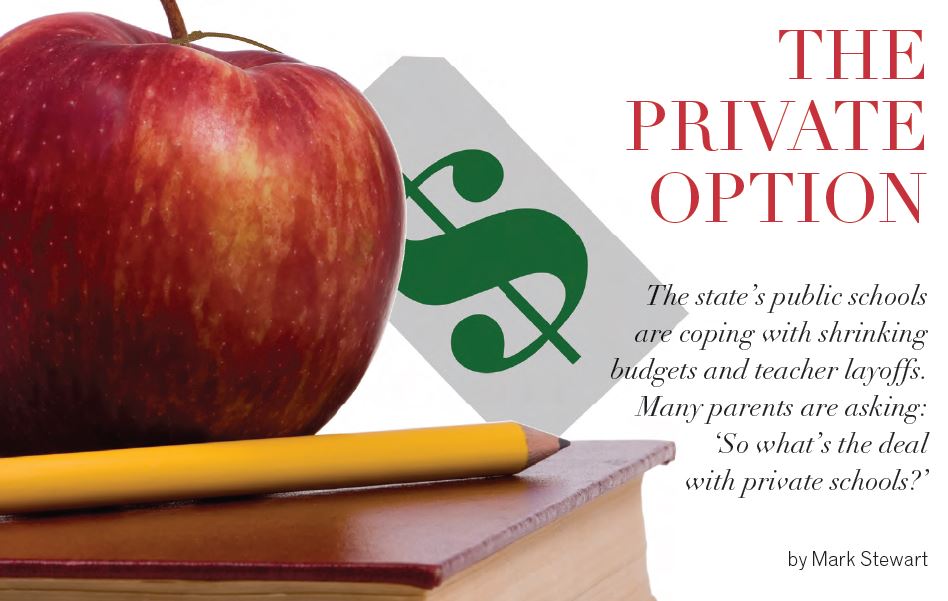









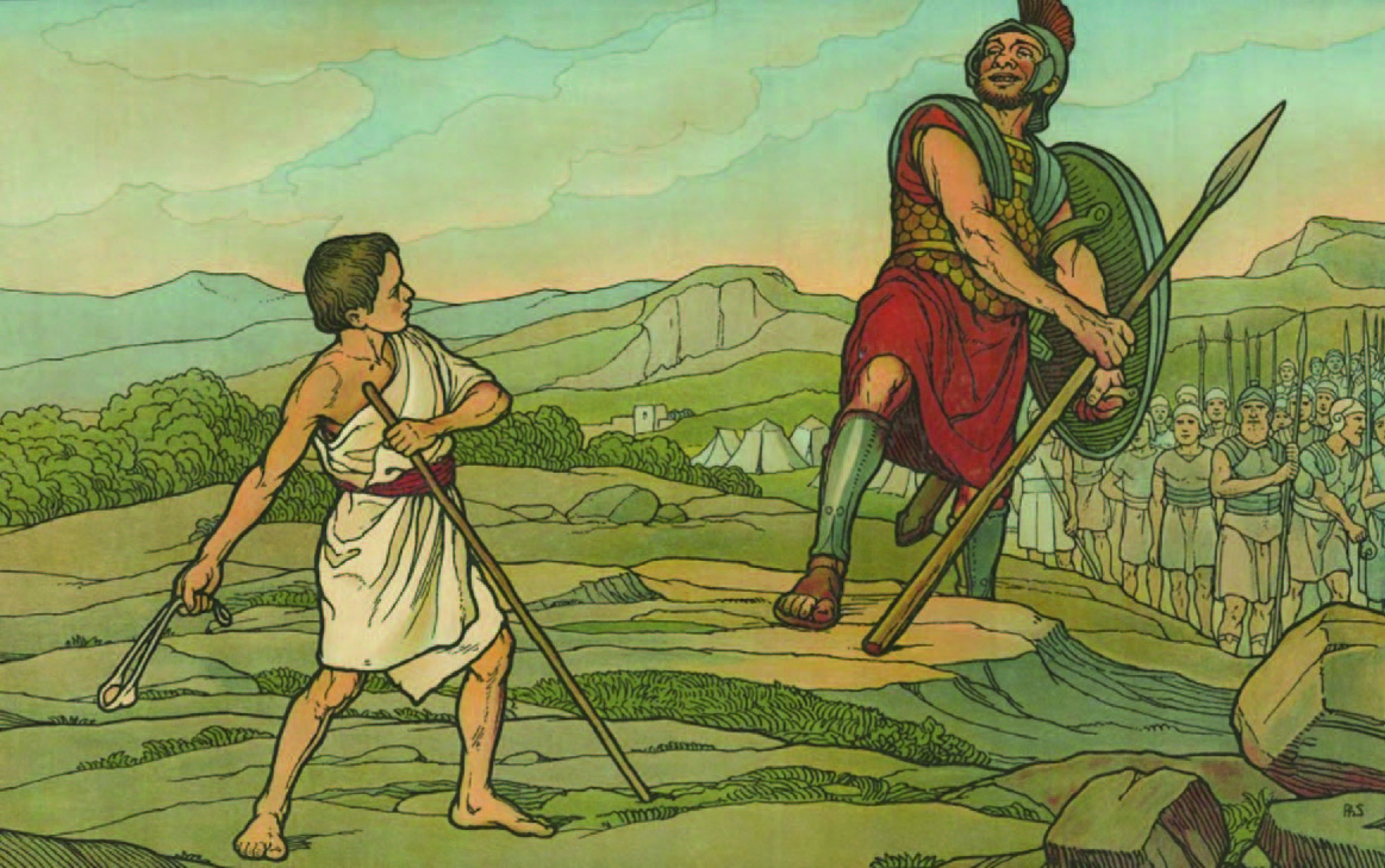
 I was a pre-teen in the early ’70s, and I swear that almost everything that came in more than one color also came in Avocado Green and Harvest Gold. My objection to these colors is perhaps more visceral than it ought to be. One weekend in 1972, my parents rented an enormous Avocado Green Plymouth Fury station wagon (with matching interior) while waiting for our little white Audi wagon to be repaired for the umpteenth time. Halfway through the 100-mile journey to our summer house in the Catskills, the noxious smell of the Naugahyde, combined with the nauseating color scheme, literally made me vomit. It was the last time that I remember ever being carsick. Now you won’t find a single Avocado Green object in my home. Well, except for actual avocados, which I love. Go figure.
I was a pre-teen in the early ’70s, and I swear that almost everything that came in more than one color also came in Avocado Green and Harvest Gold. My objection to these colors is perhaps more visceral than it ought to be. One weekend in 1972, my parents rented an enormous Avocado Green Plymouth Fury station wagon (with matching interior) while waiting for our little white Audi wagon to be repaired for the umpteenth time. Halfway through the 100-mile journey to our summer house in the Catskills, the noxious smell of the Naugahyde, combined with the nauseating color scheme, literally made me vomit. It was the last time that I remember ever being carsick. Now you won’t find a single Avocado Green object in my home. Well, except for actual avocados, which I love. Go figure. Warner pressed on with his idea and, in 1993, founded Ty Inc. to produce Beanie Babies. Warner saw the product itself as secondary to the marketing. He priced Beanie Babies at an affordable $5, but sold them only in limited quantities to small specialty shops and toy stores rather than big-box chains—to raise desirability by creating scarcity. Consumers could never find an entire collection of Beanies at one single store.
Warner pressed on with his idea and, in 1993, founded Ty Inc. to produce Beanie Babies. Warner saw the product itself as secondary to the marketing. He priced Beanie Babies at an affordable $5, but sold them only in limited quantities to small specialty shops and toy stores rather than big-box chains—to raise desirability by creating scarcity. Consumers could never find an entire collection of Beanies at one single store.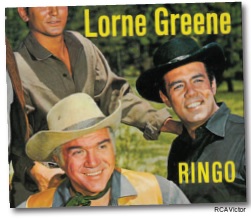 Lorne Greene, who played frontier patriarch Ben Cartwright on Bonanza, had a #1 hit on the US Billboard charts on December 5, 1964 with “Ringo”— a 45 from his album Welcome to the Ponderosa. Singing satirist Allan Sherman re-recorded the song as “The Ballad of Ringo Starr.”
Lorne Greene, who played frontier patriarch Ben Cartwright on Bonanza, had a #1 hit on the US Billboard charts on December 5, 1964 with “Ringo”— a 45 from his album Welcome to the Ponderosa. Singing satirist Allan Sherman re-recorded the song as “The Ballad of Ringo Starr.”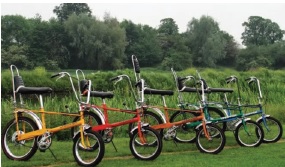 My 5-speed Sting-Ray was a dream ride: banana seat, ape-hanger handlebars, a fat rear tire, chrome flared fenders, hand brakes and a “Stik-Shift” mounted to the top frame bar. After Easy Rider, I was one of the countless kids who added Angel Forks to their Sting-Rays. The challenge was learning how to keep from jack-knifing on turns. It took a lot of nasty falls on unforgiving blacktop before getting the hang of it.
My 5-speed Sting-Ray was a dream ride: banana seat, ape-hanger handlebars, a fat rear tire, chrome flared fenders, hand brakes and a “Stik-Shift” mounted to the top frame bar. After Easy Rider, I was one of the countless kids who added Angel Forks to their Sting-Rays. The challenge was learning how to keep from jack-knifing on turns. It took a lot of nasty falls on unforgiving blacktop before getting the hang of it. Alas, some trends truly defy reason or explanation. In 1924, a Hollywood theater owner hired merchant sailor, movie stuntman and childhood human fly (how’s that for a résumé!) Alvin “Shipwreck” Kelly to perch atop his building’s flagpole, as a publicity gimmick, for 13 hours and 13 minutes. It worked…all too well. Almost instantly, Kelly became a national celebrity and flagpole-sitting became an American obsession. For the rest of the decade, young people were scaling flagpoles hoping to set new records and attract newsreel cameras for a few flickering seconds of fame.
Alas, some trends truly defy reason or explanation. In 1924, a Hollywood theater owner hired merchant sailor, movie stuntman and childhood human fly (how’s that for a résumé!) Alvin “Shipwreck” Kelly to perch atop his building’s flagpole, as a publicity gimmick, for 13 hours and 13 minutes. It worked…all too well. Almost instantly, Kelly became a national celebrity and flagpole-sitting became an American obsession. For the rest of the decade, young people were scaling flagpoles hoping to set new records and attract newsreel cameras for a few flickering seconds of fame.
 Makes something better at school or in the community.
Makes something better at school or in the community. Tries to outsmart the teachers.
Tries to outsmart the teachers.

 Rick Singer began his career as a coach and director of college-level athletics. For more than 25 years he has made a living as a life coach. He’s done life coaching in the corporate environment, as well on the student level. He has helped countless high-school student-athletes follow their dreams and play college sports, and worked with sports celebrities in planning their goals once their playing careers were over. Singer has been most successful working with teens and young adults in finding a college that is an appropriate fit. He cannot emphasize enough the importance of that “fit”—which is why he named his company The Key.
Rick Singer began his career as a coach and director of college-level athletics. For more than 25 years he has made a living as a life coach. He’s done life coaching in the corporate environment, as well on the student level. He has helped countless high-school student-athletes follow their dreams and play college sports, and worked with sports celebrities in planning their goals once their playing careers were over. Singer has been most successful working with teens and young adults in finding a college that is an appropriate fit. He cannot emphasize enough the importance of that “fit”—which is why he named his company The Key.
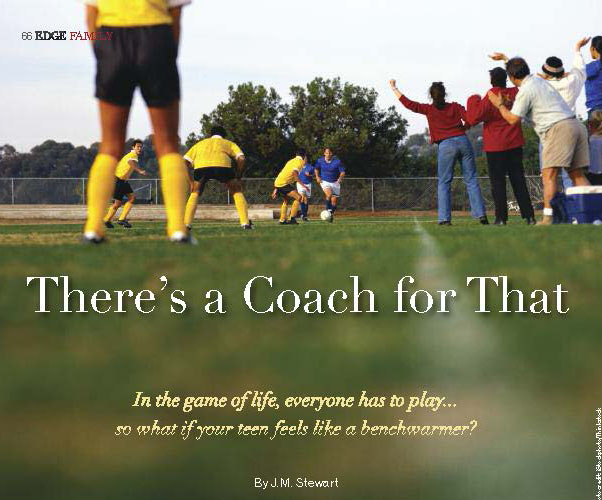
 American Pastoral
American Pastoral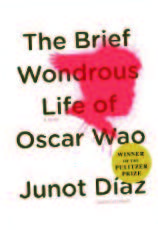 The Brief Wondrous Life of Oscar Wao
The Brief Wondrous Life of Oscar Wao Bruce
Bruce The Idea Factory: Bell Labs and the Great Age of American Innovation
The Idea Factory: Bell Labs and the Great Age of American Innovation Independence Day
Independence Day Leaves of Grass
Leaves of Grass New Jersey: A History of the Garden State
New Jersey: A History of the Garden State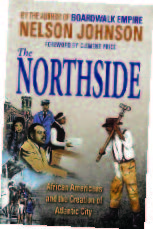 The North Side: African Americans and the Creation of Atlantic City
The North Side: African Americans and the Creation of Atlantic City  Paterson
Paterson This Side of Paradise
This Side of Paradise Toy Bulldog: The Fighting Life and Times of Mickey Walker
Toy Bulldog: The Fighting Life and Times of Mickey Walker




 SO YOU WANT TO WRITE A YOUNG ADULT BEST-SELLER…
SO YOU WANT TO WRITE A YOUNG ADULT BEST-SELLER… DIRTY DOZEN
DIRTY DOZEN
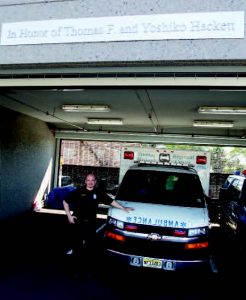 “Our parents were hard-working and very caring, and taught all of us the importance of helping each other and supporting others in the community,” says Patrick Hackett. “We are so pleased to have the opportunity to honor them at Trinitas, an organization they had such important connections to and that meant so much to them.”
“Our parents were hard-working and very caring, and taught all of us the importance of helping each other and supporting others in the community,” says Patrick Hackett. “We are so pleased to have the opportunity to honor them at Trinitas, an organization they had such important connections to and that meant so much to them.”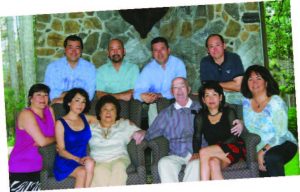





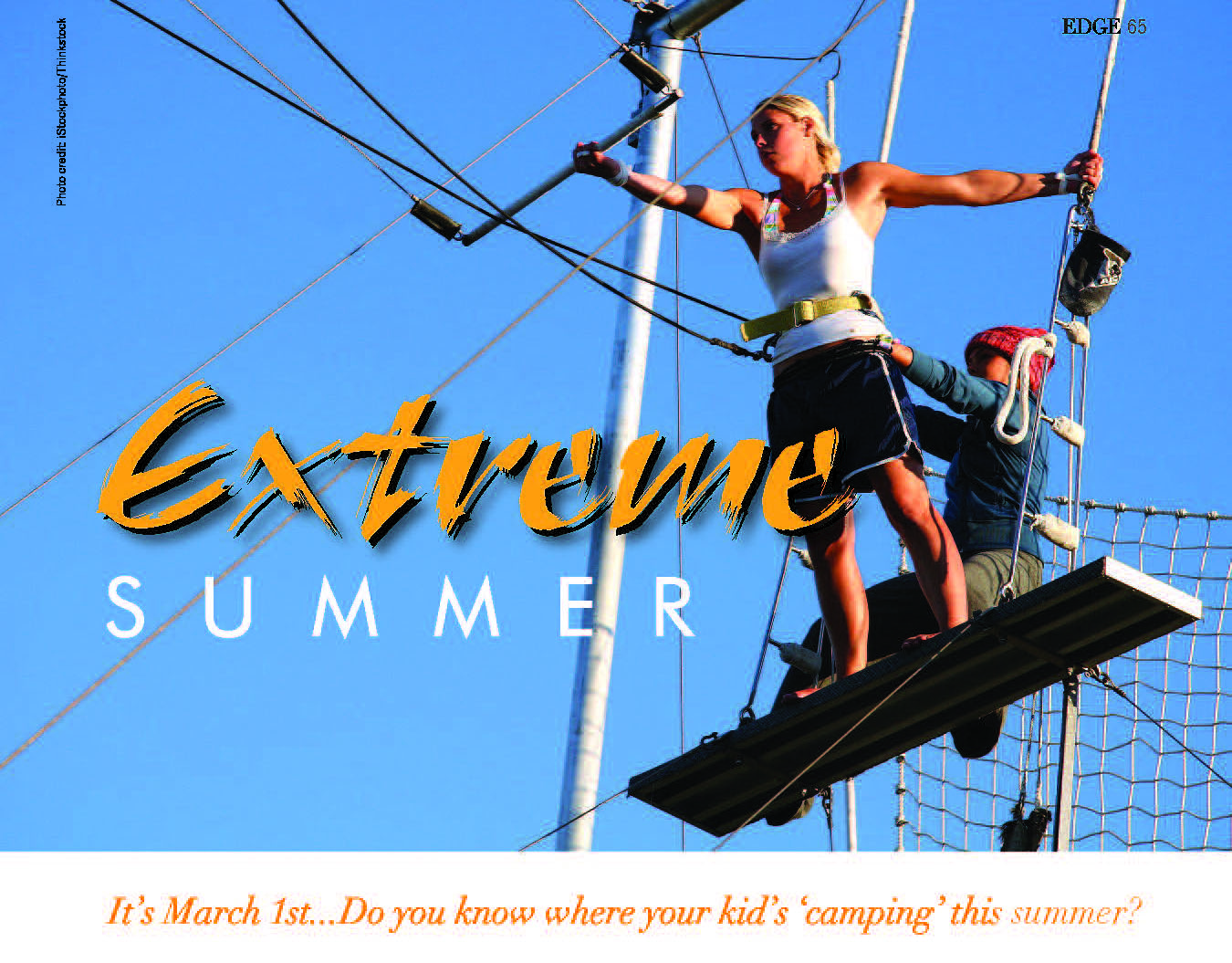



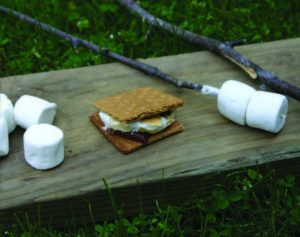
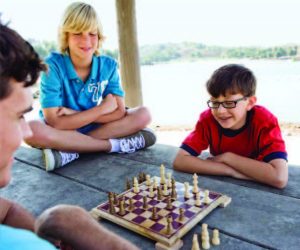

 Avid4Adventure in Boulder, CO teaches hiking, biking, climbing and paddling—building skills, grit and determination. “Kids from all over the country come for our outdoor adventures,” says Ileana Street. “Stand-up paddle boarding, rock climbing, and mountain biking are just some of our activity offerings. We make sports inviting not intimidating. It’s empowering to master a new skill and it’s a confidence-booster.” Campers stay in comfortable (but not cushy) cabins, and meal-wise, Avid4Adventure accommodates any kind of diet. Programs change every year so that repeat guests are introduced to new challenges.
Avid4Adventure in Boulder, CO teaches hiking, biking, climbing and paddling—building skills, grit and determination. “Kids from all over the country come for our outdoor adventures,” says Ileana Street. “Stand-up paddle boarding, rock climbing, and mountain biking are just some of our activity offerings. We make sports inviting not intimidating. It’s empowering to master a new skill and it’s a confidence-booster.” Campers stay in comfortable (but not cushy) cabins, and meal-wise, Avid4Adventure accommodates any kind of diet. Programs change every year so that repeat guests are introduced to new challenges. Bold Earth in Golden, CO, offers teenagers an adventure-travel summer camp filled with exploration, learning and discovery. The camp focuses on small groups and promotes leadership, teamwork and excellence in a supportive environment. “We introduce kids, in a very successful way, how to be in the game instead of simply playing the game,” says Abbott Wallis. “There are no locked doors, no HBO, and it’s all super-honest. We teach kids how to connect with others. We turn the entertainment on while turning the computers off. In bringing out laughter, dancing, and singing, we make sure that when kids return home they have a big story to tell—It was incredible…I was incredible.” Since 1976, over 15,000 students from 50 states (and more than 55 countries) have attended Bold Earth. Parents and teens are actually interviewed before being accepted.
Bold Earth in Golden, CO, offers teenagers an adventure-travel summer camp filled with exploration, learning and discovery. The camp focuses on small groups and promotes leadership, teamwork and excellence in a supportive environment. “We introduce kids, in a very successful way, how to be in the game instead of simply playing the game,” says Abbott Wallis. “There are no locked doors, no HBO, and it’s all super-honest. We teach kids how to connect with others. We turn the entertainment on while turning the computers off. In bringing out laughter, dancing, and singing, we make sure that when kids return home they have a big story to tell—It was incredible…I was incredible.” Since 1976, over 15,000 students from 50 states (and more than 55 countries) have attended Bold Earth. Parents and teens are actually interviewed before being accepted. Hi-Hills Day Camp at Gill St. Bernard’s in Gladstone, NJ offers a variety of programs for children ages 3 to 15 across 10 summer weeks. Whether a family’s goal is enrichment, academics, sports, fine arts or traditional camp programs, Hi-Hill has become quite good at offering something for everyone. Traditional camp activities include instructional tennis, yoga, archery, pottery, nature, technology, swimming, and dance. Teen travel programs (for ages 13 to 15) offer a mix of day camp activities and travels to nearby attractions, plus one five-day overnight trip. Enrichment programs includes academics, athletics, creative and performing arts—all which can be combined with any of Hi-Hills day camps. “What makes Hi-Hills unique,” says Allyson Day, “is that we are one of the most flexible camps. We recognize that summer is just as busy, if not busier, than a hectic school year. With that in mind, children can attend one or more of our programs for a half-day, half-week or whatever fits into their schedule.”
Hi-Hills Day Camp at Gill St. Bernard’s in Gladstone, NJ offers a variety of programs for children ages 3 to 15 across 10 summer weeks. Whether a family’s goal is enrichment, academics, sports, fine arts or traditional camp programs, Hi-Hill has become quite good at offering something for everyone. Traditional camp activities include instructional tennis, yoga, archery, pottery, nature, technology, swimming, and dance. Teen travel programs (for ages 13 to 15) offer a mix of day camp activities and travels to nearby attractions, plus one five-day overnight trip. Enrichment programs includes academics, athletics, creative and performing arts—all which can be combined with any of Hi-Hills day camps. “What makes Hi-Hills unique,” says Allyson Day, “is that we are one of the most flexible camps. We recognize that summer is just as busy, if not busier, than a hectic school year. With that in mind, children can attend one or more of our programs for a half-day, half-week or whatever fits into their schedule.” Otter Bar Lodge Kayak School on the Salmon River in Northern California is a premier kayak school. Its location may be remote, but the atmosphere is intimate and friendly. “Our concept is simple: keep it small, personable and first-class,” says Peter Sturges. “While we specialize in river kayaking, we also offer a number of other outdoor activities. Some kids come as kayak newbies, while others are experienced. Many come back year after year.” There is no Internet service for the kids, adds Sturges’s wife, Kristy, and they aren’t allowed to bring any electronics. “We keep them busy from dawn to dusk, so they don’t miss their smartphones or video games,” she says. “We have found over our thirty years in operation that given the choice, kids would rather be outdoors, learning or perfecting a new sport than typing away on electronics.” She adds the kids actually enjoy the remoteness, church-like silence and absence of tech distractions.
Otter Bar Lodge Kayak School on the Salmon River in Northern California is a premier kayak school. Its location may be remote, but the atmosphere is intimate and friendly. “Our concept is simple: keep it small, personable and first-class,” says Peter Sturges. “While we specialize in river kayaking, we also offer a number of other outdoor activities. Some kids come as kayak newbies, while others are experienced. Many come back year after year.” There is no Internet service for the kids, adds Sturges’s wife, Kristy, and they aren’t allowed to bring any electronics. “We keep them busy from dawn to dusk, so they don’t miss their smartphones or video games,” she says. “We have found over our thirty years in operation that given the choice, kids would rather be outdoors, learning or perfecting a new sport than typing away on electronics.” She adds the kids actually enjoy the remoteness, church-like silence and absence of tech distractions.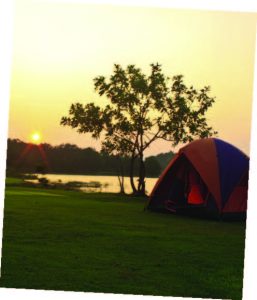 EXPLORE MORE
EXPLORE MORE
 Wild Whatcom in Bellingham, WA immerses boys and girls in exploration of the Northwest’s vast forests, wild rivers, mountainous meadows, tumbling waterfalls and pebbled beaches. “We aim to help kids discover their capabilities through suitable challenges, to better understand themselves and others,” says Laurel Peak. Wild Whatcom campers hike the Cascade ridges, watch the sunset over the Pacific, sleep under a star-studded sky, and play games that promote meaningful connections and new discoveries.
Wild Whatcom in Bellingham, WA immerses boys and girls in exploration of the Northwest’s vast forests, wild rivers, mountainous meadows, tumbling waterfalls and pebbled beaches. “We aim to help kids discover their capabilities through suitable challenges, to better understand themselves and others,” says Laurel Peak. Wild Whatcom campers hike the Cascade ridges, watch the sunset over the Pacific, sleep under a star-studded sky, and play games that promote meaningful connections and new discoveries.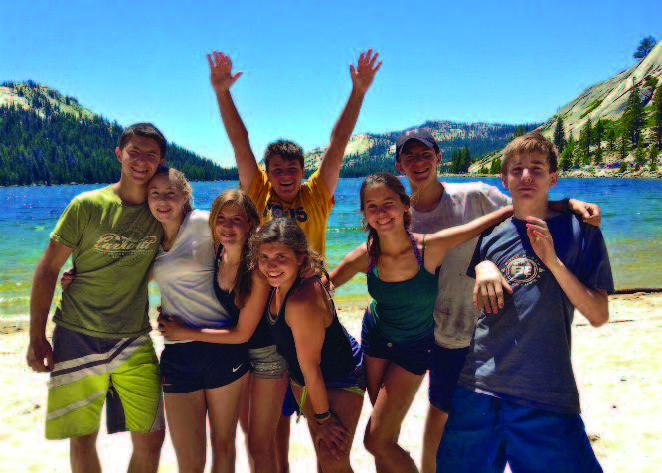

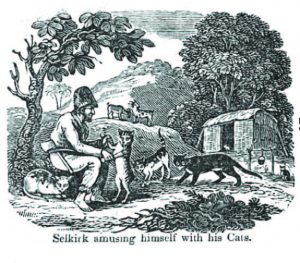 resupply stop in Mas a Terra, an uninhabited island off the coast of Chile, Selkirk insisted he would not sail unless much-needed repairs were made. Captain Stradling took the unruly Selkirk at his word and abandoned him on the island with a musket, hatchet, knife, cooking pot and Bible. The Cinque Ports sailed away…and soon sank.
resupply stop in Mas a Terra, an uninhabited island off the coast of Chile, Selkirk insisted he would not sail unless much-needed repairs were made. Captain Stradling took the unruly Selkirk at his word and abandoned him on the island with a musket, hatchet, knife, cooking pot and Bible. The Cinque Ports sailed away…and soon sank.  what appeared to be mortal wounds. After dragging the unresponsive Glass on a litter two days, the expedition’s leader decided he was slowing down their progress and assigned two members of the party to stay with him until he died. While the two men waited for the inevitable, they dug a shallow grave. When the inevitable didn’t come quickly enough, they stripped Glass of his valuables and placed him in the hole they had dug. When the men caught up with the expedition they dutifully reported the sad news of their companion’s demise.
what appeared to be mortal wounds. After dragging the unresponsive Glass on a litter two days, the expedition’s leader decided he was slowing down their progress and assigned two members of the party to stay with him until he died. While the two men waited for the inevitable, they dug a shallow grave. When the inevitable didn’t come quickly enough, they stripped Glass of his valuables and placed him in the hole they had dug. When the men caught up with the expedition they dutifully reported the sad news of their companion’s demise. 
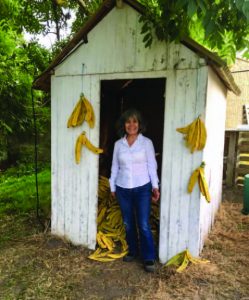
 Koepcke pocketed some candy she found at the crash site and then activated the wilderness skills she learned while growing up in the Peruvian jungle with her father, a biologist, and her mother, an ornithologist. Koepcke found a river and waded downstream in knee-deep water for 10 days before discovering a small boat. She poured gasoline over her wounds to sterilize them and then fell asleep in the vessel. She was discovered the following morning by a group of fishermen, who transported her to the nearest village. Koepcke was reunited with her father, who was stunned to see her alive. She then led the recovery team to the crash site.
Koepcke pocketed some candy she found at the crash site and then activated the wilderness skills she learned while growing up in the Peruvian jungle with her father, a biologist, and her mother, an ornithologist. Koepcke found a river and waded downstream in knee-deep water for 10 days before discovering a small boat. She poured gasoline over her wounds to sterilize them and then fell asleep in the vessel. She was discovered the following morning by a group of fishermen, who transported her to the nearest village. Koepcke was reunited with her father, who was stunned to see her alive. She then led the recovery team to the crash site. an accurate answer that even includes a map. Thanks to GPS and online tools like Waze, getting lost is no longer the terror-inducing situation it was just a generation ago. Mauro Prosperi might be reluctant to admit it, but he really could have used one of those apps. He was competing in the 1994 Marathon of the Sands, a multi-day endurance race across Morocco’s slice of the Sahara Desert when a sandstorm separated him from the pack and left him alone and disoriented. Prosperi thought he was catching up, but he was actually running into neighboring Algeria.
an accurate answer that even includes a map. Thanks to GPS and online tools like Waze, getting lost is no longer the terror-inducing situation it was just a generation ago. Mauro Prosperi might be reluctant to admit it, but he really could have used one of those apps. He was competing in the 1994 Marathon of the Sands, a multi-day endurance race across Morocco’s slice of the Sahara Desert when a sandstorm separated him from the pack and left him alone and disoriented. Prosperi thought he was catching up, but he was actually running into neighboring Algeria. 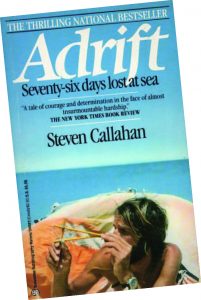 Just because you can build a boat, it doesn’t mean you should be sailing it by yourself. Steve Callahan, a naval architect and avid sailor, designed and constructed the Napoleon Solo and sailed it across the Atlantic to England in 1981. So far so good. From the port of Penzance, at the extreme southwest tip of England, he joined a single-handed sailing race to Antigua in January 1982. Foul weather off the coast of Spain swamped many of the entries, including the Napoleon Solo, but Callahan made repairs and, though he was now out of the running, decided to complete the journey anyway. One week later, the vessel’s hull was punctured during a night storm in a collision with a whale. Callahan had time to collect a few items, including the book Sea Survival, by Dougal Robertson. He climbed into a six-person life raft and watched his foundering ship drift away.
Just because you can build a boat, it doesn’t mean you should be sailing it by yourself. Steve Callahan, a naval architect and avid sailor, designed and constructed the Napoleon Solo and sailed it across the Atlantic to England in 1981. So far so good. From the port of Penzance, at the extreme southwest tip of England, he joined a single-handed sailing race to Antigua in January 1982. Foul weather off the coast of Spain swamped many of the entries, including the Napoleon Solo, but Callahan made repairs and, though he was now out of the running, decided to complete the journey anyway. One week later, the vessel’s hull was punctured during a night storm in a collision with a whale. Callahan had time to collect a few items, including the book Sea Survival, by Dougal Robertson. He climbed into a six-person life raft and watched his foundering ship drift away.  the raft was in the “fat” part of the Atlantic that commercial airliners did not use, so no one else was close enough to detect the E-PIRB. As days turned into weeks, Callahan put Robertson’s words into action. He noticed that a kind of ecosystem developed around his raft and was able to spear or hook a variety of fish. He also created a sun still and other improvised devices that produced a pint of water a day. Callahan fended off sharks, repaired punctures, lost a third of his bodyweight and endured painful saltwater sores for 76 days before drifting to the coast of Guadeloupe.
the raft was in the “fat” part of the Atlantic that commercial airliners did not use, so no one else was close enough to detect the E-PIRB. As days turned into weeks, Callahan put Robertson’s words into action. He noticed that a kind of ecosystem developed around his raft and was able to spear or hook a variety of fish. He also created a sun still and other improvised devices that produced a pint of water a day. Callahan fended off sharks, repaired punctures, lost a third of his bodyweight and endured painful saltwater sores for 76 days before drifting to the coast of Guadeloupe. 



 Lewis & Clark College • Oregon
Lewis & Clark College • Oregon
 Georgian Court University • New Jersey 5
Georgian Court University • New Jersey 5






 lead instructor Andy Beutel. “This is their summer vacation. They are choosing to do this and are enjoying themselves when writing. I don’t think schools give children the opportunity to do that very often, so Write On Sports definitely gives kids that chance to have fun while learning.”
lead instructor Andy Beutel. “This is their summer vacation. They are choosing to do this and are enjoying themselves when writing. I don’t think schools give children the opportunity to do that very often, so Write On Sports definitely gives kids that chance to have fun while learning.”

 Bob Sickles explains that the local products excel over the mass-produced sauces. “While a larger production will process all the tomatoes, whether they are ripe or still green, and get a good sauce which has a higher acid flavor, the producers of the local sauces use hand-picked tomatoes and make sure they all are ripe. This creates a sweeter sauce, which is more work intensive and therefore has to be a bit more expensive. But it’s worth it.”
Bob Sickles explains that the local products excel over the mass-produced sauces. “While a larger production will process all the tomatoes, whether they are ripe or still green, and get a good sauce which has a higher acid flavor, the producers of the local sauces use hand-picked tomatoes and make sure they all are ripe. This creates a sweeter sauce, which is more work intensive and therefore has to be a bit more expensive. But it’s worth it.” Not going on Bob’s word alone, we conducted a non-scientific tomato sauce taste test engaging four individuals with limited “foodie” credentials. In the mix were four New Jersey tomato sauces with slightly differing prices that can be purchased around the state—Nanina’s (25 cents per ounce) from Belleville, Manno’s (30 cents per ounce) from Bradley Beach, Jersey Italian Gravy (40 cents per ounce) from Ridgewood and Jar Goods (50 cents per ounce) from Hoboken—as well a bottle of Cabernet Sauvignon and a loaf of fresh ciabatta bread for dipping into the sauces.
Not going on Bob’s word alone, we conducted a non-scientific tomato sauce taste test engaging four individuals with limited “foodie” credentials. In the mix were four New Jersey tomato sauces with slightly differing prices that can be purchased around the state—Nanina’s (25 cents per ounce) from Belleville, Manno’s (30 cents per ounce) from Bradley Beach, Jersey Italian Gravy (40 cents per ounce) from Ridgewood and Jar Goods (50 cents per ounce) from Hoboken—as well a bottle of Cabernet Sauvignon and a loaf of fresh ciabatta bread for dipping into the sauces. According to our tasting panel, all the sauces were winners, yet different. The least expensive, Nanina’s, provides a very good, all-purpose kitchen staple. One taster’s favorite, Manno’s marinara, was particularly gutsy with herb and garlic flavors punching out on our palates. This sauce would be good with seafood. Delicious Jersey Gravy was thicker and sweet. And the rich, full-bodied Jar Goods was the densest sauce, almost like a paste, offering a fruity, sweet flavor.
According to our tasting panel, all the sauces were winners, yet different. The least expensive, Nanina’s, provides a very good, all-purpose kitchen staple. One taster’s favorite, Manno’s marinara, was particularly gutsy with herb and garlic flavors punching out on our palates. This sauce would be good with seafood. Delicious Jersey Gravy was thicker and sweet. And the rich, full-bodied Jar Goods was the densest sauce, almost like a paste, offering a fruity, sweet flavor.

 My husband and I are not newcomers to taking in friends in need. In fact, after Super Storm Sandy, we invited a family of five—three boys aged one to six and their parents—whose home had been flooded and was uninhabitable for two months. We and they had a blast together living like a cross-generational dorm.
My husband and I are not newcomers to taking in friends in need. In fact, after Super Storm Sandy, we invited a family of five—three boys aged one to six and their parents—whose home had been flooded and was uninhabitable for two months. We and they had a blast together living like a cross-generational dorm. 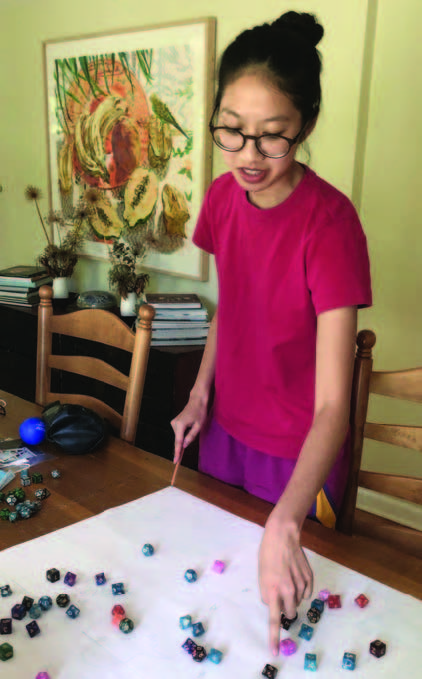

 SETTING LIMITS
SETTING LIMITS

